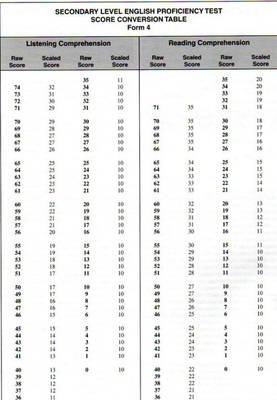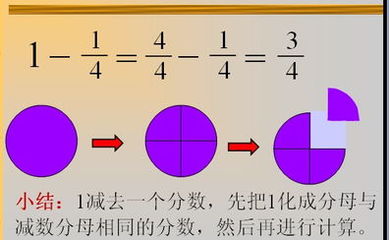The basic notionsof companylaw articulatedin Salomon'scase 1 Salomon is thebest knownsource of thetwo fundamentalprinciples ofcompany law: (i) a companyis an entityin its ownright, separateand distinctfrom itsshareholders (separatelegal entityprinciple ("SLEP"))2; and (ii)shareholders havelimited liability (limited liabilityprinciple ("LLP")). However,what Salomonmost importantly decided, wasthat even ifa singleperson isbeneficially entitledto all ofa company's shares (a oneperson company), thecompany remainsa separatelegal personand theshareholder hasLL, and itdoes notthereby becomethe agent ortrustee ofthe shareholder.3 Salomonthus judiciallysanctioned theone personcompany ("OPC").4
The one personcompany -policy issues
Many commentatorsbelieve thatParliament neverintended toextend thebenefit of separate legal personalityand LL toOPCs. TheSalomon decisionhas beencalled "shocking"and "calamitous".5 Byaccepting thelawfulness ofOPCs, theHouse of Lords fundamentally changedthe course ofcompany law.6 Itlead to theexponential growthof OPCs andthe developmentof corporategroups. Bothof these developments have raisedserious questionsabout theextent towhich SLEPand LL should be appliedto them.7
Thepurpose ofincorporation andthe privilegeof limitedliability wasintended to encourage and promoteexploration, manufacturingand tradingactivities whichwere to thebenefit ofthe commercialcommunity andthe nation,but which itwould have
1 Salomonv A Salomon& CoLtd [1897] AC22 (HL) [Salomon]. 2 Thismeans it canown property,enter intoobligations, acquirerights andsue and besued in itsown name. Since itexists as alegal personseparate fromits shareholder,they are notparties toits contracts,do not ownits property,and cannot besued by itscreditors. 3 Salomon, aboven . See forexample, DavidGoddard "CorporatePersonality -‐Limited Recourseand its Limits" in RossGrantham andCharles Rickett(eds) CorporatePersonality inthe 20thCentury (Hart Publishing, Oxford,1998) 1 at14. Oneperson companiesare nowexpressly permittedin view of Companies Act1993, s10(b). 4 For convenience,I will referto one personand otherclosely heldcompanies asone person companies. 5For example:see P Davies(ed) Gower'sPrinciples ofModern CompanyLaw (6th ed,Sweet and Maxwell, London, 1997)at 79; OKahn-‐Freund "SomeReflections onCompany LawReform (1944)7 MLR 54. 6 RossGrantham andCharles Rickett"The Bootmaker'sLegacy toCompany LawDoctrine" inRoss Granthamand CharlesRickett (eds)Corporate Personalityin the 20thCentury (HartPublishing, Oxford, 1998) Rickett,1 at 4.
7 Ibidat 5.
1 been toorisky tocarry onwithout somelimit beingplaced on theliability ofthe participants. 8 However,the OPCappears illegitimatein light ofthis policy. Thelower Courtsin Salomonheld the OPCto becontrary tothe statutoryintent.9 A soletrader is notentitled tothe benefitof limitedliability. The sevenshareholders eachmust have areal interestin thecompany. TheLaw Lordstook a strictliteral interpretationto thelegislation. As LordHalsbury LCstated: "Ihave no rightto add tothe requirementsof thestatute, norto take fromthe requirementsenacted. The sole guidemust be thestatute itself." 10 Inhis view anyimplied restrictionwould be toovague and if"the Legislatureintended toprohibit something,you ought toknow whatthat somethingis."11 This approachavoids thecommercial uncertaintythat wouldresult fromthe lowerCourt's approach.
Apolicy justificationfor thedecision wasthat creditorswho tradedwith Salomon& CoLtd only hadthemselves toblame, becausethey chose totrade with acompany havingliability limitedto itsassets.12 Lord Watsonsaid thecreditors:13
could haveinformed themselvesof the termsof purchaseby thecompany, of the debentures...and ofthe amount ofshares heldby eachmember...the statute casts uponthem the dutyof makinginquiry inregard tothese matters....a creditor whowill not takethe troubleto use themeans thestatute provides for enablinghim toprotect himselfmust bear theconsequences ofhis own negligence.
An economicargument insupport ofOPCs statesthat it ismost economicallyefficient forcreditors toreflect theadded risk ofdoing business withcompanies byincreasing theirprices. Objectionscan be raisedto thecreditor responsibilityargument. For example,even if thepoint issound asregards voluntarycreditors, whochoose todeal with the company, itis notapplicable inrelation toinvoluntary creditors,such as tort claimants againstcompanies. Second, OPCsbeing thestandard formof business
8 AndrewRogers "Reformingthe LawRelating toLimited Liability"(1993) 3 AJCL136 at 137. 9Salomon, aboven 1, at29. 10Salomon, aboven 1, at29. 11Ibid, at 32.
12 Ibid,at 40 perLord Watson,at 53 perLord MacNaghten. 13Ibid, at 41per LordWatson.
2
organisation, tradecreditors haveno practicalchoice but totrade withcompanies now. Third,searching companyregisters maybe impractical.
Company law asa body ofrules
Company law isa body oflegal rules.14 Theexistence ofcompanies aslegal entities, and everylegal propositionabout companies,derives fromlegal rules. An incorporationrule givesrise tocompanies, asartificial legalpersons (SLEP). However,SLEP is justa conceptualstarting point,since companiescannot act in reality. AsFarrar states:"To accommodatea corporationinto the restof the law is...an elaborateexercise inrule interpretationand application.15 By rules of attribution, throughthe actionsof flesh andblood persons,companies enterinto contracts,own property,acquire rightsand undertakeobligations. 16 Further rules, such asthose in theCompanies Act1993 ("CA"),set outpowers, dutiesand other legal consequences forthose involvedwith thecompany; inparticular itsdirectors andshareholders. Thus, LL isnot a logicalconsequence ofSLEP, but ofa statutory provision that permitsthe incorporationof companies("LLCs") whereshareholders attainlimited liability("LL").17
SLEP is thefundamental legalconception ofcompany law,upon which isbuilt a
structure ofrules thatdetermine legalconsequences forcompanies andthe
individuals involvedwith them.18 Thus,unjust legalconsequences thatoccur through
illegitimate useof companies,can beaddressed atthe level ofthe rulesthat
determine legalconsequences forcompanies andindividuals involvedwith them,
such as LL(eg. astatutory provisionimposing liabilityon controllingshareholders in
certain situations). Thisapproach isto bepreferred tomodifying SLEP.
14 Seefor example:Meridian GlobalFunds ManagementAsia Ltd vSecurities Commission[1995] 2 AC 500 (HL)[Meridian]; JohnH Farrar"Frankenstein Incorporatedor Fools’Parliament? Revisitingthe Conceptof theCorporation inCorporate Governance"(1998) 10Bond LR 142at 147; WHohfeld "The Nature of Stockholders’Individual Liabilityfor CorporationDebts" (1909)9 Colum LRev 285; HLA Hart "Definitionand Theory inJurisprudence" (1954)70 LQR 37. 15Ibid at 147. He citesMeridian, ibid,in support.
16Meridian, ibid. 17Indeed, separatelegal entitycompanies, withshareholders havingunlimited liability,have existed since beforeSalomon, aboven 1, throughto thepresent day. 18See Meridian,above n 14.
3
Practical importanceof the LLC
The LLC hasbeen thebasic legalform ofbusiness organisationfor over 100years. It has beencentral tothe creationof newtechnology andachievement ofeconomic progressand prosperitythroughout allthe developednations. AsGower states: "Unquestionably thelimited liabilitycompany hasbeen a majorinstrument inmaking possiblethe industrialand commercialdevelopments whichhave occurred throughout theworld."19 The LLPis thecrucial featureof the LLC,as Holdsworth explains: "Therecan be nodoubt, thatin the longrun, theintroduction ofthe principlehas helped tofoster tradeby attractingcapital toindustry, whilstsuccessive amendmentsof the Actshave helpedto suppressthe fraudswhich, tosome extent,it facilitated. 20 Thus,any modificationto fundamentalcompany lawconcepts musttake intoaccount theimportance ofcompanies tosociety.
Lifting the veiland theSalomon principle The acceptanceof theSalomon principlemeans thatfor acompany's creditorsto have recourse to ashareholder, somefactor beyondbeneficial ownershipof allshares, or control of thecompany, mustexist.21 The Courtshave beenunable todevelop a unifying theory fordeciding whenthe corporateveil will bepierced.22 However the veil can bepierced bythe Court insome cases,often withoutmodifying theSalomon principle,to bringabout justresults.
Agency Salomon hasmade itdifficult forCourts tofind that acompany hasacted as anagent of itsshareholders.23 However, ifthe factsestablish it,the companywill be theagent of itsshareholder, inwhich casethe Salomonprinciple isnot violated. Thisoccurred
19 PDavies (ed)Gower's Principlesof ModernCompany Law(6th ed,Sweet andMaxwell, London,1997) at 70. 20 ALGoodhart andHG Hanbury(eds) WilliamSearle Holdsworth A Historyof Englishlaw (Sweet& Maxwell,London, 1975)vol xv at54. 21And of coursealso theCompanies Act,unless overriddenby laterlegislation. Or,as issometimes the case, forcompanies tohave thebenefit orburden of aparticular rulewhere strictapplication ofSLEP preventsit. 22See commentsto thiseffect byRogers A-‐JAin Briggs vJames Hardie& CoPty Ltd(1989) 16NSWLR 548(NSWCA) at567 et seq. See also,John H Farrar"Frankenstein Incorporatedor Fools’Parliament? Revisitingthe Conceptof theCorporation inCorporate Governance"(1998) 10Bond LR 142at 150. 23 SeeRogers A-‐JAin Briggs vJames Hardie& CoPty Ltd,ibid, at 569.
4
in Smith Stone& KnightLtd vBirmingham Corporation.24 However, thetemptation existsfor Courts tomassage factsto support afinding ofagency inorder to dojustice. Interpretation under anenactment orcontract Theinterpretation ofan enactment,or contract,may requireconsideration ofthe individualswho liebehind thecorporate veil,in order toapply a ruleor provisionto thecompany.25 Thus, thenationality ofa company'sshareholders anddirectors may give it thecharacter ofan alienenemy: DaimlerCompany Ltd vContinental Tyre& RubberCo.26 Policy dictatedthat lawspreventing tradingwith theenemy shouldbe extendedto companies. Anattribution rulehad to befashioned toenable the application of theenemy tradingrule tocompanies. Thus, justresults canbe achievedby createdspecial attribution. The resultis adherenceto, ratherthan derogationfrom, SLEP. However, wherestatute orcontract interpretationrequires it, SLEP or LLmay bedisregarded: Adamsv CapeIndustries Plc.27 Companiesset up toavoid existingobligations. Policy dictatesthat individualsmust not bepermitted toavoid pre-‐existingpersonal legalobligations byutilising companies. Thus, inGilford MotorCo Ltd vHorne, Horne incorporated a companyto avoid abinding restraintof trade("ROT").28 The Court held the ROTwould beenforced byinjunction againstboth Horneand hiscompany. The Court seemedto bothaccept anddeny theseparate legalpersonality ofthe company. It heldthat: "...thecompany was amere cloak orsham...it wasa mere device for enablingMr. E. B.Horne tocontinue tocommit breachesof [therestraint of trade clause]."29 It iscommon inveil liftingcases forCourts to usedisapproving wordslike "sham"which suggestthe companydoes notexist, whenin fact italways does. The LawLords identifiedthis conceptualmistake inSalomon.30 However
24 SmithStone &Knight Ltd vBirmingham Corporation[1939]4 AllER 116. 25 SeeMeridian, aboven 14. 26 DaimlerCompany Ltd vContinental Tyre& RubberCo [1916] 2AC 307. 27 Adamsv CapeIndustries Plc[1990] Ch433. 28 Gilford MotorCo Ltd vHorne [1933]Ch 935. 29Ibid, atp961, perLord HanworthMR. 30Salomon, aboven 1, forexample at33, per LordHalsbury LC.
5
logically itaccepted thelegal existenceof thecompany, as aparty to theproceedings andcapable ofbeing injuncted. Theprinciple thecase must betaken asstanding for,is that aperson shallnot be permitted to usea company inorder toavoid apre-‐existing legalobligation. This approachcan bereconciled withSalomon. TheCourt acceptsthe companyis a separate legal person;it is aparty to theproceedings andis injuncteditself. That company beinginjuncted toprevent Hornebreaching hisobligation doesnot deny its separate legalexistence. The companyis injunctedby applicationof a formof attributionrule, underwhich Horne'sROT obligationis attributedto thecompany. This would besimilar toattribution ofthe shareholders'and directors'enemy status to the companyin Daimler. 31
LLP is notundermined byGilford Motor.32 LLPmust havebeen intendedby Parliamentto extendonly toliabilities ofthe company,which comeinto existence after itsincorporation; notto pre-‐existingobligations ofthe incorporator. Horne is subjected tono additionalliability toGifford Motors. Thus,justice wasserved withoutdeparture fromthe Salomonprinciple.33 There areother potentiallegitimate rationalesfor thedecision. The decisioncould bebased on theequitable principle that astatute maynot be usedas a vehiclefor fraud. It might alsohave beenpossible toimply a terminto therestraint oftrade provisionpreventing Hornefrom using a company toperform theprohibited activities. Macaura In Macaura,Mr Macauracould notrecover forthe value ofa destroyedforest, owned by hiscompany, butwhich he hadinsured andpaid thepremiums for.34 Thiswas becauseof the effectof SLEPcombined withthe insurancelaw rule thatonly thelegal ownerof propertyhas aninsurable interestin it. The legalreality wasthat the
31 DaimlerCompany Ltd vContinental Tyre& RubberCo, above n26. 32Gilford MotorCo Ltd vHorne, aboven . 33 Salomon,above n 1. 34Macaura vNorthern AssuranceCo Ltd [1925]AC 619.
6
company owned theforest; sharesbeing a merechose inaction.35 However, the economic realitywas that MrMacaura wasthe ultimateowner of theforest. He owned allthe shares inthe company(and so couldwind it upand regainlegal ownershipof theforest, subjectto payment ofcreditors) andsuffered economically through theforest's destruction. Thus, giventhe insurancelaw ownershiprule, SLEP worked a hardshipfor Macaura.
Thismay seemunjust. However, itcan be arguedthat one whoseeks theadvantages ofincorporation, mustalso acceptits disadvantages. Also,Macaura maybe said tobe theauthor of hisown misfortune,by carelesslynot adheringto legalformality and insuring inthe company'sname. Directors'tort liability- TrevorIvory Theliability ofcompany directorsfor the tortof negligentmisstatement was considered inTrevor IvoryLtd vAnderson. 36 Mr Ivoryhad formed aOPC and wasits managingdirector, controllingshareholder andemployee. The companyprovided horticulturaladvice andsupplied sprays,with Ivoryhaving theindustry knowledge. Henegligently adviseda customer touse aherbicide sprayon itsraspberries which badly damagedthem. Itwas held thatthe companywas liable intort, but notIvory.37 The casesupports ageneral rulethat directorsand seniormanagers arenot personallyliable wheretheir actsare attributedto thecorporation. This seems unjust. The decisionreflects anapparent misunderstandingof the scopeof LLand the roleof attributionrules. Asregards LL,Cooke J heldthat afinding thedirector liablewould derogatefrom LLP:"...when heformed hiscompany, MrIvory made itplain to allthe worldthat limitedliability wasintended."38 However, asHardie Boys Jrealised: "Thosepurposes [ofincorporation] includeprotection ofshareholder's fromthe
35 Salomon,above n 1. 36Trevor IvoryLtd vAnderson [1992]2 NZLR (CA). 37 Seealso Williamsv NaturalLife HealthFoods Ltd[1998] 2 AllER 577 (HL),another director negligent advicecase, whichcame to thesame result,for similarreasons. 38Trevor IvoryLtd vAnderson, aboven 34, at524.
7
company's liabilities,but thataffords noreason toprotect directorsfrom the consequences of theirown acts andomissions." 39 LLP protectsthe shareholders,not directorsor employees. 40 Moreover,the conceptbecomes oneof noliability, for directors andemployees.
The Courtintroduced anapproach toemployee liabilitywhich hasbeen labelled
"disattribution". Lord Cookestated that:"If a personis identifiedwith acompany vis-‐
a-‐vis thirdparties, itis reasonablethat primafacie thecompany shouldbe the only
party liable."41 HardieBoys J heldthat: "Whatdoes runcounter tothe purposesand
effect ofincorporation isa failure torecognise thetwo capacitiesin whichdirectors
may act...that inappropriate circumstancesthey are tobe identifiedwith the
company itself...Thatthis was aone-‐man companyis of courseby no means
conclusive, butit made itnecessary forthe respondentsto adduceclear evidencethat
Mr Ivory wasnot simplyacting as thecompany performingits contractualobligations
towards them."42 Thus,by "disattribution",employee actionsthat areattributed to
companies becomelegally treatedas not theactions ofthe employee.
The disattributiontheory wasaccepted inStandard CharteredBank vPakistan
National ShippingCorporation (No2).43 However, theconcept ismisconceived and
was rejected bythe House ofLords inStandard CharteredBank vPakistan National
Shipping Corporation(No 2). 44 Thefunction ofattribution rulesis solely todetermine
when acts ofa company'shuman operativesare treatedas thecompany's acts,for the
purpose ofenabling legalrules to beapplied tocompanies. Their functionis not to
give employee'simmunity fromtort liability. Thus thedisattribution conceptis
unprincipled andcapable ofleading tounjust results. It shouldtherefore berejected
in New Zealand,which it hasbeen in BodyCorporate 202254v Taylor.45
39 Ibid,at 526. 40 See:Salomon, aboven 1; CAs10(c)-‐ "Acompany musthave 1 ormore shareholders,having limited or unlimitedliability forthe obligationsof thecompany"; CAs21-‐ "Theregistered nameof a company must endwith the word"limited...if theliability ofthe shareholdersof thecompany islimited". 41 Trevor IvoryLtd vAnderson, aboven 34, at520. 42 Ibid, at526-‐527. 43 StandardChartered Bankv PakistanNational ShippingCorporation (No2) [2000] 1Lloyd’s Rep218 (CA). 44 StandardChartered Bankv PakistanNational ShippingCorporation (No2) [2003] 1AC 959 (HA). 45Body Corporate202254 vTaylor [2009]2 NZLR 17(CA) at28-‐29 perWilliam YoungP and ArnoldJ.
8
Corporate Groups
By establishingthe legitimacyof OPCs,Salomon laidthe foundationsfor themodern corporategroup.46 However, theCourt inSalomon couldnot haveforeseen the development of corporategroups.47 Althoughcorporate groupshad existedin Englandsince 186748, even by1977 theywere regardedas "arelatively modern concept".49
Manycommentators seethe extensionof LL tothe separatelegal entitieswithin a corporate group as"without anyadequate reasoningin terms ofprinciple orpolicy otherthan adogmatic applicationof Salomonitself". 50 The purposeof thecompanies legislationwas toprovide individualswith LL, toencourage themto investfunds in business ventures. 51 Allowing thecompanies themselvesto achieve LLin relationto distinctbusinesses, byseparating themout intodistinct companies,does notserve thispurpose. Corporategroups, or"conglomerates", bringabout some ofthe mostunjust consequencesof incorporation. Conglomeratescan utiliseSLEP and LLto create a group structurewhich insulateslosses withinone orseveral companiesand shiftsthe risk ofloss ontocreditors, includinginvoluntary onessuch as tortvictims. For example, aholding companymay avoidliability forinjuries causedby dangerous products, by forminga subsidiaryto manufactureand distributethem. SLEPand LL protect the groupfrom recourseby creditorsof anysubsidiary unableto repaythem. Theargument, tracingback toSalomon, thattrade creditorsvoluntarily assumethe risk ofdealing withcompanies, doesnot apply toinvoluntary creditorslike tort claimants.52 Tort victimshave nochoice inwhich companycauses themharm.53 The conglomerate structure alsoencourages theintentional undercapitalisationof group
46 Salomonabove, n 1. 47Ibid. See PBlumberg "LimitedLiability andCorporate Groups"(1986) J CorpL 573 at605. 48 In reBarned’s BankingCompany [1867]Ch 105. 49The Albazero[1977] AC 744at 807 perRoskill LJ;see alsoWalker vWimborne (1976)137 CLR 1 (HCA) at 6per Mason J. 50John H Farrar"Frankenstein Incorporatedor Fools’Parliament? Revisitingthe Conceptof the Corporation in CorporateGovernance" (1998)10 Bond LR142 at 147. See alsoPhillip Blumberg "Limited Liabilityand CorporateGroups" (1986)J Corp L573 at623–626. 51 See above,n 8. 52 Salomon,above n 1,per LordWatson at 40and per LordMacNaghten at53. 53Rogers A-‐JAin Briggs vJames Hardie& CoPty Ltd(1989) 16NSWLR 548(NSWCA).
9
companies, increasingthe risk tocreditors. Also, incorporatingcompanies in different jurisdictions canmake actionsdifficult topursue. As a result,commentators havecalled forreform of thefundamental companylaw conceptsof SLEP andLL inrelation tocorporate groups. ProfessorBlumberg regards thisissue as “oneof the majorproblems incorporation law”.54 Astrong policy argument existsthat thereshould begroup responsibilityfor subsidiarycompanies whoare unable torepay theircreditors. This positionis supportedby theeconomic argumentthat treatsthe wholegroup as asingle enterprise. Howeverstrict adherenceto Salomonmeans it islegitimate toutilise asubsidiary toinsulate therest of thegroup fromtort liability.55
InBriggs vJames Hardie& CoPty Ltd,Rogers AJAconsidered agroup enterprise argument thatan employeeof asubsidiary whohad contractedasbestosis couldsue theparent.56 He heldthat the factthat a parentcompany hasthe power toexercise completecontrol overa subsidiaryand hasexercised thatpower, is,under the established Salomon principles,"entirely toosimplistic" and"that the lawpays scant regard to thecommercial realitythat everyholding companyhas thepotential and, more oftenthan not, infact, does,exercise completecontrol overa subsidiary."57 However,he wascritical ofthe use ofundercapitalised subsidiariesto defeat creditors: "...there seemsto me tobe somethingwrong withthe state ofthe law when, in order torecover compensationfor hisapparent asbestosis,a person inthe position of this plaintiffhas to mounta challengeto fundamentalprinciples ofcompany law."58 Alater publicinquiry concludedthat the lawregulating corporategroups was inadequate to protectinvoluntary creditorslike tortclaimants andneeded amendment.59
54 PhillipI Blumberg“The CorporateEntity in anEra ofMultinational Corporations”(1990) 15 DelJ Corp L283 at 288. 55Salomon, aboven 1. See forexample Adamsv CapeIndustries Plc[1990] Ch433; 56 Briggs vJames Hardie& CoPty Ltd(1989) 16NSWLR 548(NSWCA).
57Ibid, at577. 58 Ibid, at559. 59 David JacksonQC, Report ofthe SpecialCommission ofEnquiry intothe MedicalResearch and Compensation Foundation (2004).

10
The most dramaticexample ofthe injusticeSLEP and LLcan bring inrelation to conglomerates (and theneed formodification ofLL andovercoming jurisdictional issues), especiallypowerful multinationalswith largescale operations,is the Bhopal disaster. In 1984 anindustrial accidentat apesticide plantoperated by asubsidiary ofthe UnionCarbide Corporationgroup of USA("UCC") inBhopal, India,killed thousandsof residentsand injuriedup to severalmillion people,with longterm environmentalhazards alsocaused.60 UCC soughtto shielditself throughLL and SLEP;the Bhopalsubsidiary aloneargued to bethe liableparty. UCCalso argued Indian Courts hadno legaljurisdiction overit. Afterlengthy andexpensive litigation in USA andIndia, asettlement wasreached andUCC paid anwoefully inadequatesum of moneyin compensation.61 LL should bemodified to
CONCLUSIONS Legal notionslike LLshould bemodified toa limitedextent toprevent injustice,but in away that isas consistentas possiblewith fundamentalcompany lawconcepts and purposes. Modificationof LL isto bepreferred overSLEP. Themost pressingareas formodification ofLL to preventinjustice, consideredherein, wereundercapitalised companies,corporate groupsand OPCs andpossibly tortliability ofdirectors.
 爱华网
爱华网


